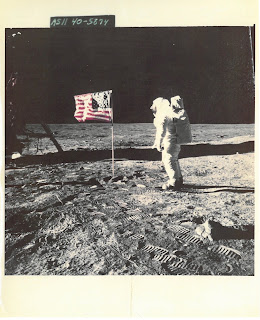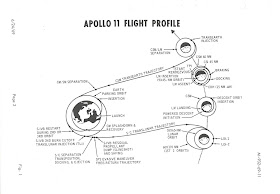 On May 25, 1961, President John F. Kennedy called on the nation to “commit itself to… landing a man on the moon and returning him safely to Earth.” Only a month earlier the USSR had succeeded to put the first human into space and Kennedy needed to trump that feat during the height of the Cold War. On May 5, 1961, Alan Shepard, Jr. became the first American in space when his Mercury capsule “Freedom 7” went suborbital. Over the next three years, six more Mercury missions went up, followed by the Gemini program. Both Mercury and Gemini programs were designed to test and explore every step that would be needed to make Kennedy’s pledge possible. There were of course missteps some minor, some major and one, the tragedy of Apollo 1, fatal.
On May 25, 1961, President John F. Kennedy called on the nation to “commit itself to… landing a man on the moon and returning him safely to Earth.” Only a month earlier the USSR had succeeded to put the first human into space and Kennedy needed to trump that feat during the height of the Cold War. On May 5, 1961, Alan Shepard, Jr. became the first American in space when his Mercury capsule “Freedom 7” went suborbital. Over the next three years, six more Mercury missions went up, followed by the Gemini program. Both Mercury and Gemini programs were designed to test and explore every step that would be needed to make Kennedy’s pledge possible. There were of course missteps some minor, some major and one, the tragedy of Apollo 1, fatal.Apollo 11 launched from Cape Kennedy on July 16, 1969, with a crew of three, Commander Neil Armstrong, Command Module Pilot Michael Collins, and Lunar Module Pilot Edwin “Buzz” Aldrin. The crew had detailed objectives for this mission which included obtaining a variety of data on experiments including solar wind composition and seismic activity, collecting lunar samples and deploying a television camera to transmit signals to Earth. On July 20th, after 102 hours and 45 minutes of flight, the “Eagle” landed in the Sea of Tranquility.
Neil Armstrong was the first to descent the ladder to the moon surface because he was the commander and senior member of the crew and because his seat was closer to the “door.” Buzz Aldrin was next and for the next 2 hours and 31 minutes both men performed the required tasks before heading back to the “Eagle” for some rest and rendezvous with the Columbia in lunar orbit.
Columbia splashed down in the Pacific Ocean on July 24, 1969, and the crew was recovered by the USS Hornet. After a vigorous scrub down of each astronaut and his equipment, the crew was placed into a 21-day quarantine to prevent contamination from possible extra-terrestrial pathogens.
Apollo 11 was an all-around success and opened the door for 7 more missions to the Moon, with 6 of them successful. NASA was able to learn from the crew’s experiences and concerns and adept future missions accordingly. During the crew’s scientific debriefing on August 12, Armstrong had one regret:
In retrospect, the one thing that I felt was a real shortcoming of our planning was the fact we were unable, when we saw something of interest, to collect it at the time; we had to remember where that was and hope that we had time later to come back. I would recommend that in our future work, we not make that mistake and that we improve our ability to pick up samples of interest and record them at the time we see them.
Mission reports and photographs of the Apollo, Gemini and Mercury missions can be found in MS-1024, the papers of Richard Allenby, DC 1944 who was the director of the Manned Space Science Program at NASA.



No comments:
Post a Comment